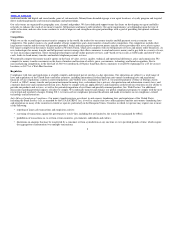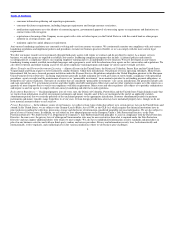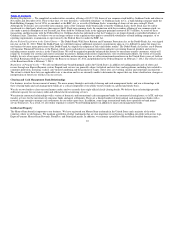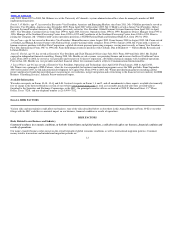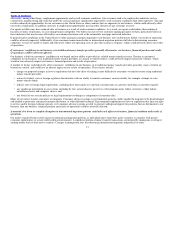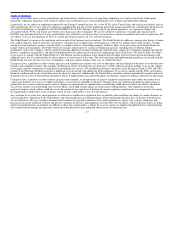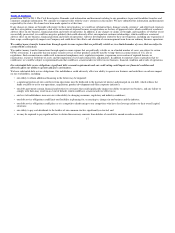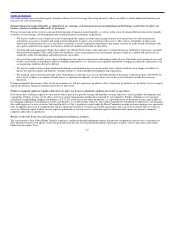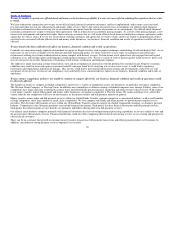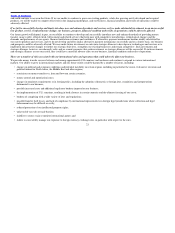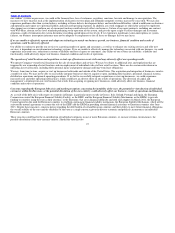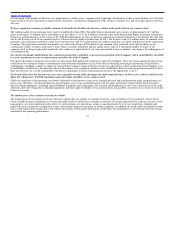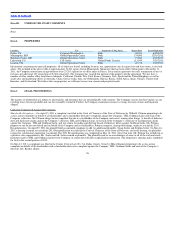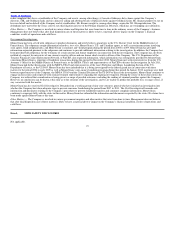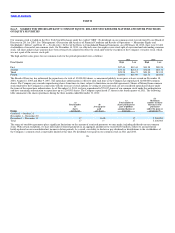MoneyGram 2011 Annual Report Download - page 19
Download and view the complete annual report
Please find page 19 of the 2011 MoneyGram annual report below. You can navigate through the pages in the report by either clicking on the pages listed below, or by using the keyword search tool below to find specific information within the annual report.
Table of Contents
Our credit rating is non−investment grade. Together with our level of leverage, this rating adversely affects our ability to obtain additional financing and
increases our cost of borrowing.
Sustained financial market illiquidity, or illiquidity at our clearing, cash management and custodial financial institutions could adversely affect our
business, financial condition and results of operations.
We face certain risks in the event of a sustained deterioration of financial market liquidity, as well as in the event of sustained deterioration in the liquidity,
or failure, of our clearing, cash management and custodial financial institutions. In particular:
• We may be unable to access funds in our investment portfolio, deposit accounts and clearing accounts on a timely basis to settle our payment
instruments, pay money transfers and make related settlements to agents. Any resulting need to access other sources of liquidity or short−term
borrowing would increase our costs. Any delay or inability to settle our payment instruments, pay money transfers or make related settlements with
our agents could adversely impact our business, financial condition and results of operations.
• Clearing and cash management banks that conduct our official check, money order and money transfer businesses could fail or experience sustained
deterioration in liquidity. This could lead to our inability to clear our payment service instruments and move funds on a global and timely basis as
required to settle our obligations and collect partner receivables.
• Our revolving credit facility is one source of funding for our corporate transactions and liquidity needs. If any of the banks participating in our credit
facility were unable or unwilling to fulfill its lending commitment to us, our short−term liquidity and ability to engage in corporate transactions such
as acquisitions could be adversely affected.
• We may be unable to borrow from financial institutions or institutional investors on favorable terms, which could adversely impact our ability to
pursue our growth strategy and fund key strategic initiatives, such as product development and acquisitions.
• We maintain cash at commercial banks in the United States in amounts in excess of the Federal Deposit Insurance Corporation limit of $250,000. In
the event of a failure at a commercial bank where we maintain our deposits, we may incur a loss to the extent such loss exceeds the insurance
limitation.
If financial liquidity deteriorates, there can be no assurance we will not experience an adverse effect, which may be material, on our ability to access capital
and on our business, financial condition and results of operations.
Failure to maintain sufficient capital could adversely affect our business, financial condition and results of operations.
If we do not have sufficient capital, we may not be able to pursue our growth strategy and fund key strategic initiatives, such as product development and
acquisitions. Further, we may not be able to meet new capital requirements introduced or required by our regulators. Further, although we are no longer
considered a bank holding company for purposes of U.S. law or the law of any other jurisdiction, as a global provider of payments services and in light of
the changing regulatory environment in various jurisdictions, we could become subject to new capital requirements introduced or imposed by our regulators
that could require us to issue securities that would qualify as Tier 1 regulatory capital under the Basel Committee accords or retain earnings over a period of
time. In addition, given our leveraged nature and the significant restrictive covenants in our debt agreements, there can be no assurance that we will have
access to sufficient capital. Failure to meet capital requirements or to have access to sufficient capital could materially impact our business, financial
condition and results of operations.
We face credit risks from our retail agents and financial institution customers.
The vast majority of our Global Funds Transfer segment is conducted through independent agents that provide our products and services to consumers at
their business locations. Our agents receive the proceeds from the sale of our payment instruments and money transfers, and we must then collect these
funds from the agents. If an
18


